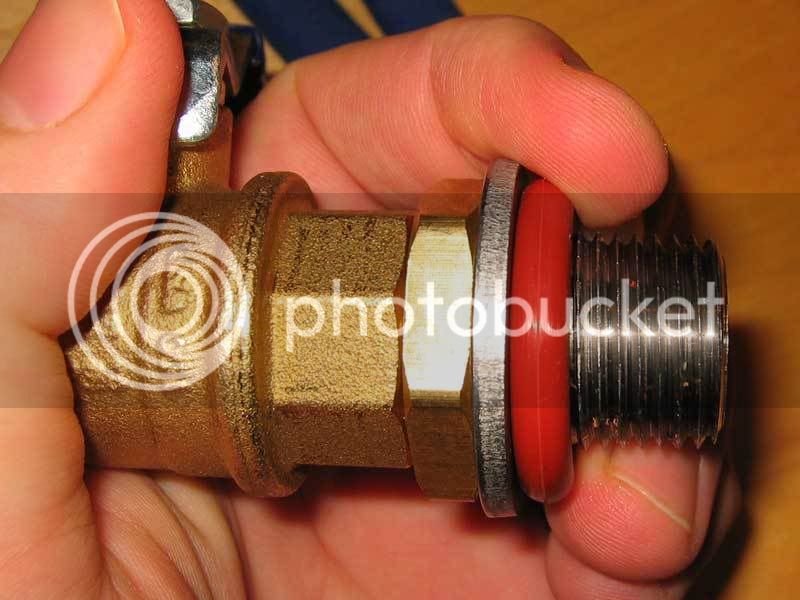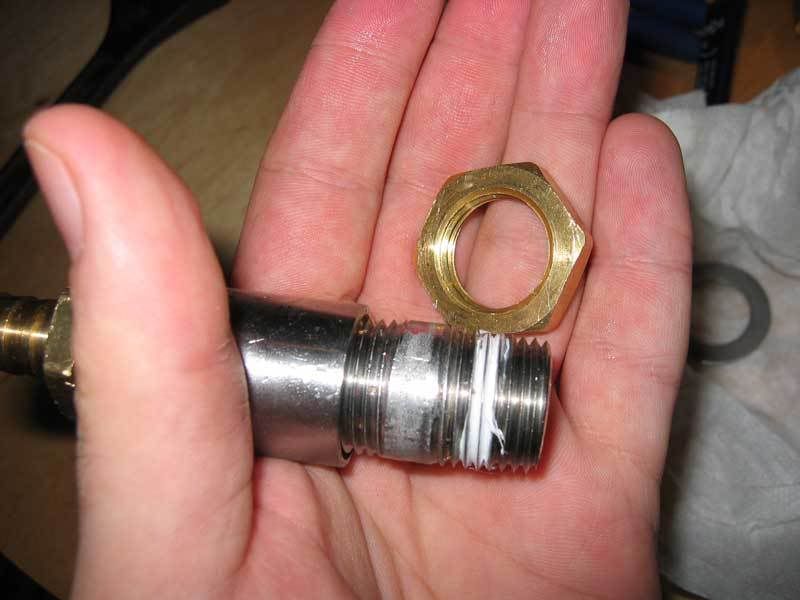These instructions might help with the installation of the bulkhead. As you can see, there is an o-ring over an area without threads. From the pictures posted earlier in this thread, it would help if the original poster didn't use the thicker washer up against the brass nut, but one of the thinner ones provided. It is not necessary to use all of the washers, they are provided as spacers to make up for people using pots that are extremely thin.
Austin Homebrew provides a product that works for a wide range of applications at a competitive price point. It is easier to provide one product that is adjustable by allowing customers to discard washers if their application does not require them. There is more than one company out there making coolers with removable spigots, and not all of them have the same wall thickness. These will not work with Max-Cool coolers because of the wall thickness at the spigot (I could go on with why a regular cooler would work better than a heavy duty one, and it has nothing to do with the wall thickness where the spigot is removed).
Addressing the description that was something to the effect of "a loose nut on a pipe nipple", the nut should not be loose at all - if it is then the person that put it together (at Austin Homebrew) was ignoring assembly instructions. The stainless pipe nipple is put in a vice with copper jaws and the brass nut is tightened with a large wrench to the point that the threads should be destroyed. The over engagement of the threads deforms the threads on the brass since it is the softer of the two materials. This provides a permanent and leak-proof seal between the nipple and the nut, it also discourages customers from trying to incorrectly assemble the part should they fail to read the instructions.
As far as the issue of the rear o-ring deforming, that is due to over tightening. The larger o-rings are less likely to deform from over tightening than smaller diameter o-ring.
Suggestions on how to build a better homebrew bulkhead? A compression ring (a stainless washer that has the same ID as the OD of the o-ring) that surrounds the o-rings would help prevent over expansion or distortion, but would add a few dollars to the cost. The problem with that is if is used on a small diameter cooler, such as a 5-gallon one it wouldn't work because the edges of the compression ring would hit the wall of the cooler creating problems. Completely unnecessary, but why not... I have also found that using a titanium backing washer to the internal o-ring to be a nice bonus in this situation. Since titanium flexes quite easily it conforms to the inside curve of a round kettle and when removed for cleaning or replacement of o-rings it springs back to its original shape. I'll see if I can find the one I have for a picture... but really, once someone adds all of these options they might as well have paid for a kettle with welded fittings.
If you are simply looking to do this as cheap as possible then a grommet (food grade EPDM) that fits the hole with a tight fitting piece of tube passing through the middle works just fine. It will leak a little and you couldn't put it on a burner. You would need a pinch clamp attached to softer tubing to control the flow rate.





































![Craft A Brew - Safale S-04 Dry Yeast - Fermentis - English Ale Dry Yeast - For English and American Ales and Hard Apple Ciders - Ingredients for Home Brewing - Beer Making Supplies - [1 Pack]](https://m.media-amazon.com/images/I/41fVGNh6JfL._SL500_.jpg)



























